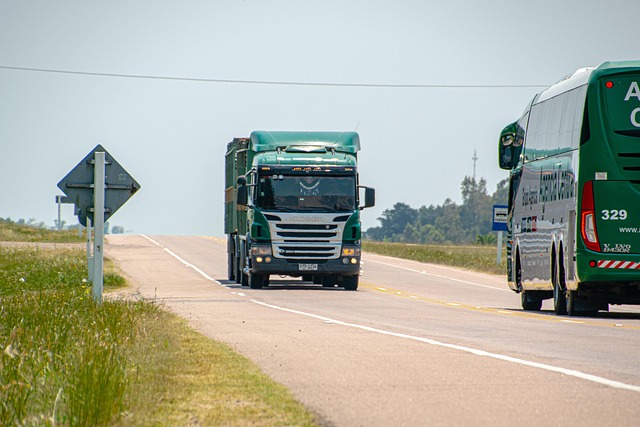Looking to register your car in California? This comprehensive guide breaks down the process step-by-step. First, understand the eligibility requirements for car registration in California, ensuring your vehicle meets state standards. Next, gather necessary documents for DMV VIN verification, a crucial step in the process. Prepare your vehicle for inspection and title transfer, then complete the DMV registration process efficiently. Finally, learn post-registration tasks like insurance, tags, and annual renewal to keep your vehicle legally registered. Master these steps with our expert advice on dmv vin verification.
- Understand Eligibility Requirements for Car Registration in California
- Gather Necessary Documents for DMV VIN Verification
- Prepare Your Vehicle for Inspection and Title Transfer
- Complete the DMV Registration Process Step-by-Step
- Post-Registration Tasks: Insurance, Tags, and Annual Renewal
Understand Eligibility Requirements for Car Registration in California

Before you begin the registration process, it’s crucial to understand the eligibility requirements for car registration in California. To register your vehicle, it must meet specific standards set by the Department of Motor Vehicles (DMV). One key step is ensuring the vehicle has undergone a valid vin verification process. This involves checking the vehicle’s unique identification number (VIN) to confirm its authenticity and history.
Additionally, your car must pass an inspection to ensure it meets safety and emissions standards. A mobile vin inspection or traditional vin inspection at a certified station can help streamline this process. By fulfilling these requirements, you’ll be one step closer to legally registering your vehicle in California.
Gather Necessary Documents for DMV VIN Verification

Before heading to the DMV for car registration, make sure you have all the required documents ready. The first step in California’s registration process involves a DMV VIN verification, which means proving the vehicle’s identity through its unique Vehicle Identification Number (VIN). Gather your car’s title or registration papers, along with any previous insurance documents, as these will be essential for the inspection. Additionally, ensure you have identification documents such as a valid driver’s license or state-issued ID card.
For a seamless mobile vin verifier experience, download an approved app that can perform a mobile vin verification. These apps often streamline the process by allowing you to input your VIN and instantly receive relevant data about the vehicle’s history, helping to prevent any potential issues during your DMV visit.
Prepare Your Vehicle for Inspection and Title Transfer

Before heading to the California DMV for registration, ensure your vehicle is ready through a thorough preparation process. This involves several critical steps, starting with obtaining essential documents. Gather your vehicle’s registration certificate from the previous state, proof of insurance, and the title or lienholder information. Additionally, you’ll need to complete a Vehicle Ownership Transfer Form, available on the DMV website.
For a seamless transition, consider arranging a mobile vin inspection or verification service. This convenient option allows a specialized technician to perform a detailed vehicle inspection, including checking the vehicle identification number (VIN) for any discrepancies. A correct and accurate VIN is crucial for the dmv vin verification process, as it ensures your car’s history is accurately represented, facilitating a swift title transfer.
Complete the DMV Registration Process Step-by-Step

Registering a car in California involves several steps, but with a clear understanding, the process can be completed efficiently. Begin by gathering all necessary documents, including your vehicle’s registration certificate from the previous state, proof of insurance, and identification documents like a driver’s license. Next, visit a local California Department of Motor Vehicles (DMV) office or use their online services to initiate the registration.
During the DMV vin verification process, you’ll need to provide your Vehicle Identification Number (VIN) for inspection. This can be done through a mobile VIN inspection service that allows you to enter your VIN online or by visiting a certified mechanic for a physical VIN inspection. Once your vehicle passes the inspection, you can proceed with filling out the registration forms and submitting them along with the required fees. The DMV will then process your application, issue a new registration certificate, and update your vehicle’s records, ensuring your car is legally registered in California.
Post-Registration Tasks: Insurance, Tags, and Annual Renewal

After successfully registering your car with the California DMV, there are a few key tasks to complete to ensure your vehicle is legally compliant and properly insured. One of the first steps post-registration is to obtain auto insurance, which is not only required by law but also protects you financially in case of accidents or damage. You’ll need to choose a policy that meets the state’s minimum liability requirements and fits your specific needs.
Additionally, ensure you acquire and display current vehicle registration tags and stickers. These are typically issued by the DMV upon registration. Another important annual task is renewing your car’s registration before it expires. This process usually involves updating any changes in ownership or address and paying the required fees. For convenience, many Californians opt for a mobile vin inspection or use a mobile vin verifier to streamline the renewal process, allowing them to complete these essential tasks from the comfort of their homes.
Registering a car in California involves understanding eligibility requirements, gathering essential documents for DMV VIN verification, preparing your vehicle for inspection and title transfer, completing the registration process step-by-step, and handling post-registration tasks like insurance, tags, and annual renewal. By following these steps diligently, you can ensure a smooth and legal car registration process in the Golden State.



